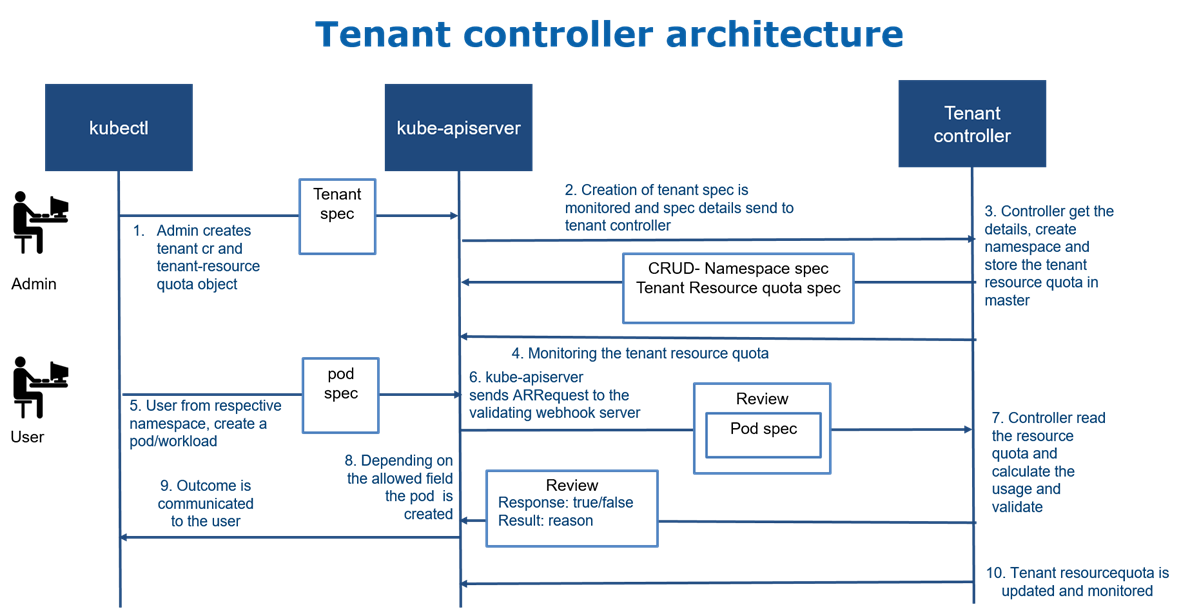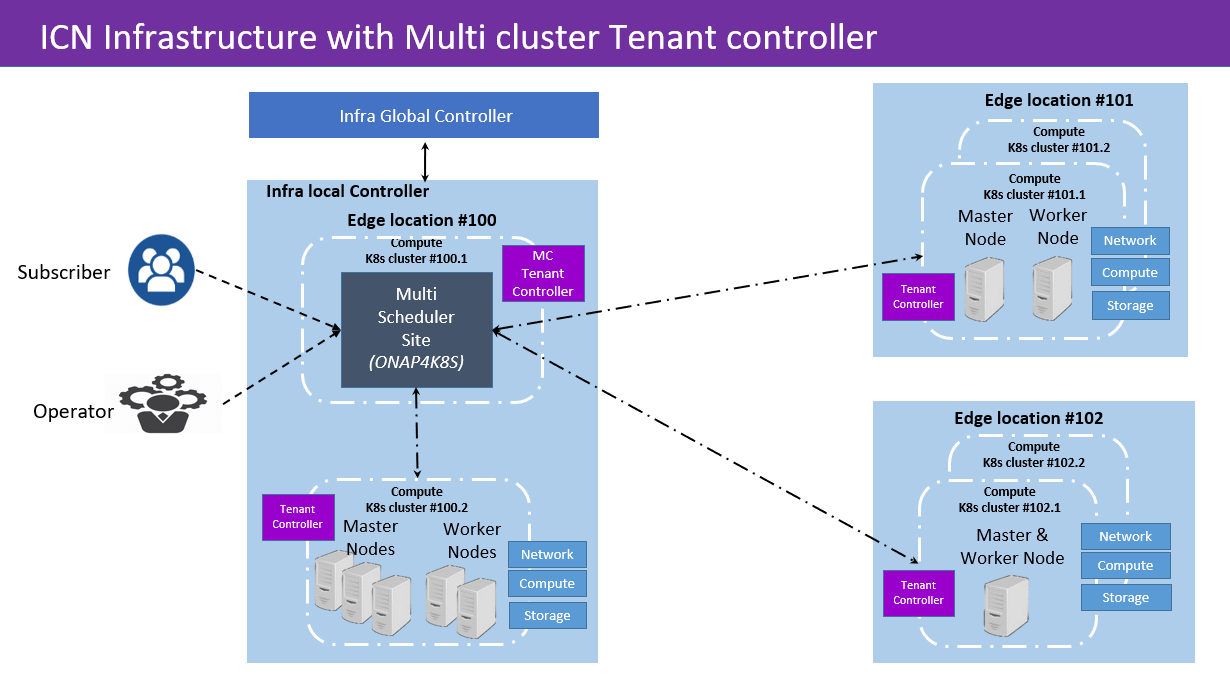...
- For a service provider, a tenant is basically a group of end-user sharing the same cluster, we have to make sure that the end user resources are tracked and accountable for their consumption in a cluster
- In a few cases, admin or end-user application is shared among multiple tenants, in such case application resource should be tracked across the cluster
- Centralization resource quota or the allocation limits record should be maintained by admin or for the end user. For example, just a kubectl "query" to Kubernetes API should display the resource quota and policy for each end-user or tenant
- In Edge use case, the service orchestration like ICN should get the resource details across multiple clusters by resource orchestration, should set the resource allocation for the cluster and decide the scheduling mechanism
- User credential centralization with application orchestration
Cloud Native Multi-tenancy Proposal - Tenant controller
Cloud Native Multi-tenancy proposal reuses the Kubernetes Multi-tenancy works to bind the tenant at the service orchestration and resource orchestration level.
...
Tenant controller architecture
ICN Requirement and Tenant controller gaps
| ICN Requirement | Tenant Controller |
|---|---|
Multi-cluster tenant controller
| Cluster level tenant controller |
Identifying K8S clusters for this tenant based on cluster labels
| Tenant is created with CR at cluster level [Implemented] |
At K8s cluster level
|
|
Certificate Provisioning with Tenant
| Suggestion to bind the tenant with kubernetes context to see namespaces associated with it[Not implemented]. |
|
|
Multi-Cluster Tenant controller
<This section is incomplete and a work in progress ... needs rework and further updates ... >
Srini notes:
- Define CRUD API - add/delete/modify/read MC Tenant.
- Design note :
- On how this would be done as Micro-service in the ONAP.
- How does interact with K8S clusters.
- How does it ensure that all the configuration is applied (rollbacks, unsuccessful edges).
- Visibility of the configuration applied on per MCTenant basis.
- When new K8S cluster is added with the label of interest, taking care of creating tenant-specific information in that edge etc..
- Extensibility (future K8S clusters having some other features that require configuration for multi-tenancy).
Reference
Kubernetes Multi-Tenancy Draft Proposal
Tenant Concept in Kubernetes
...

